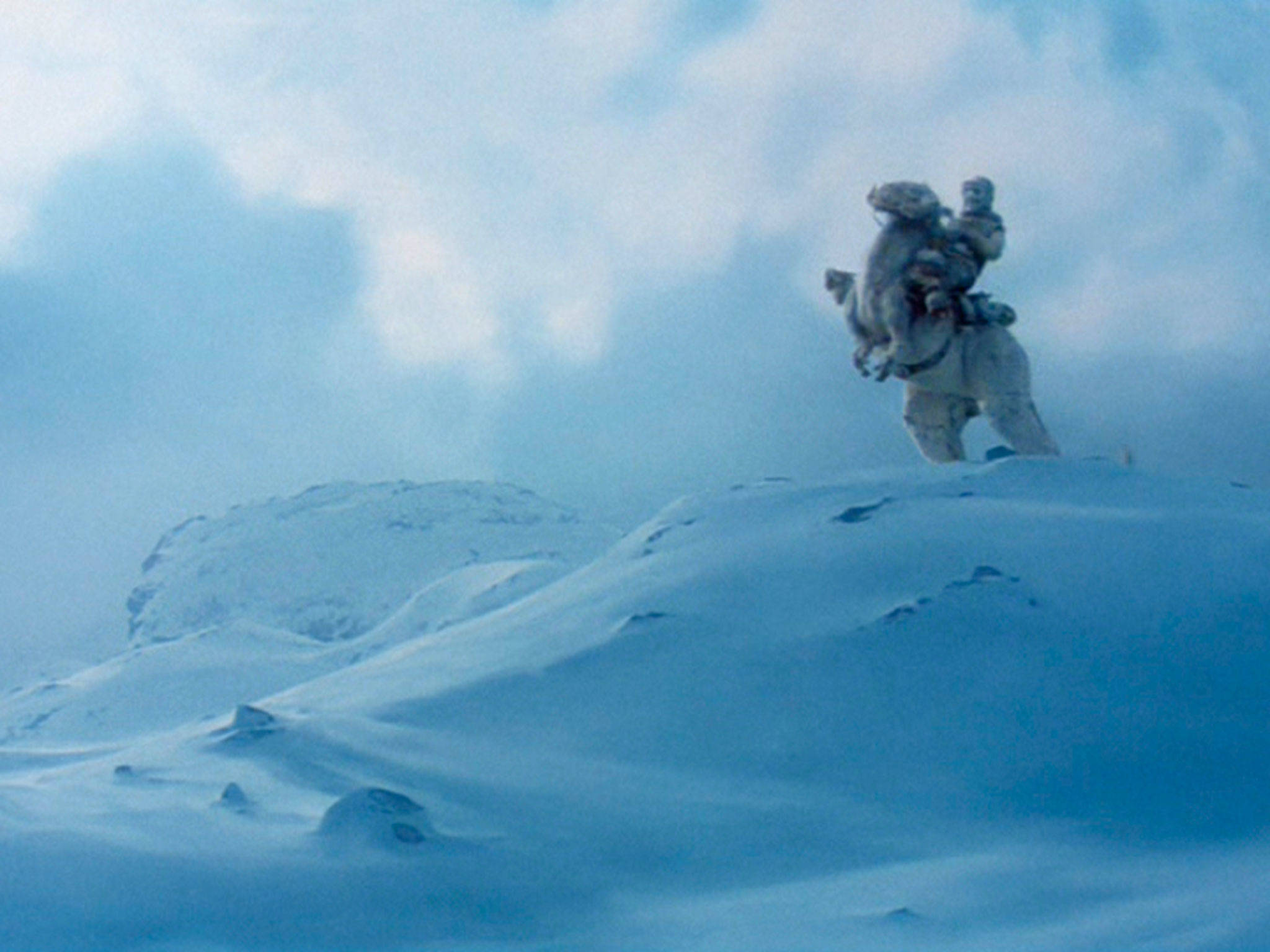Wookies. Tauntans. Ugnaughts.
Since the 1970s, this mix of creatures has made an impact in the Star Wars universe helping fly the Millennium Falcon, inadvertently saving the life of a freezing Jedi, or assisting a Sith Lord
In recent years, details continue to surface from crew with the movies and a few locals confirming Sequim’s connection to bringing them to life.
Locals have long known about tauntans, creatures that protagonists Han Solo and Luke Skywalker ride on the ice planet Hoth in the opening of “Star Wars: Episode V — The Empire Strikes Back.”
Ben Burtt, sound designer/supervising sound effects editor on the film, confirms in J.W. Rinzler’s 2010 book, “The Sounds of Star Wars,” that he traveled to Sequim to record sounds for “Empire” and “The Star Wars Holiday Special.”
“They were out in a rural, quiet location, which was a bid advantage,” Burtt told Rinzler.
“I spent three or four days taping every animal they had, including grizzly bears. I think Chewbacca’s howl was probably a bear that I recorded for the Wookie show and then used on Empire.”
Burtt, an Academy Award winner for sound effects editing, most recently served as sound designer for “Star Wars: Episode VIII — The Last Jedi,” which begins playing nationwide including on the Olympic Peninsula on Friday, Dec. 15.
Rinzler writes that Burtt’s recordings at the Olympic Game Farm included a sea otter that went on to become the tauntan.
Burtt elaborated on “The Empire Strikes Back” DVD audio commentary that the otter was less than a foot long with a loud “almost a wa-wa- voice, which we pitched down a bit.”
Former game farm employee Barbara McInnes Edmondson recalled leading a sound engineer, who we now confirm as Burtt, sometime in the summer of 1977.
She recalled Burtt carrying a lot of gear and telling her he was gathering sound effects such as baby black bears sucking their paws for the second movie.
In “The Sounds of Star Wars,” Burtt mentions the sea otter by name, which long-time game farm employee Clay Richmond believes was Ena, an Asian clawless sea otter who was about half the size of native river otters.
Richmond, who has worked at the farm since 1974 including several years leading animal care, said Ena was one of his favorite animals.
She appeared in the “The Life and Times of Grizzly Adams” and died in the time frame of filming the series, Richmond said.
More sounds
Back then, Richmond said movie crews came in often to the game farm.
“We had to be quiet or get animals to make sounds. We never knew what we were going to have to do,” he said.
Burtt said in various interviews that he has a massive catalog of sounds for Star Wars films after its creator George Lucas tasked him to seek out new sounds for his universe.
He spent one year collecting animal sounds from bears to sick animals, Burtt said, on “The Empire Strikes Back” DVD commentary.
He put moans, purring and more together on one tape and made different categories that would later become a pattern of speech for Chewbacca, Han Solo’s sidekick.
Burtt said on the DVD he manufactured Chewbacca’s howl mostly with bears.
His catalog of Wookie noises from Sequim first went into the widely panned “Star Wars Holiday Special” that aired once on TV on Nov. 17, 1978. Some of Chewbacca’s family, including his wife Malla and father Itchy, are credited as being recordings from Sequim.
Lucas has expressed his distaste of the holiday special in interviews; it can now only be viewed online or through bootleg, hard copy recordings.
Burtt said in “The Sounds of Star Wars” he went back to his sound library for the Wookies in “Star Wars: Episode III: Revenge of the Sith,” where several Wookies appear. These Wookies likely feature the game farm’s distinct animals, too.
Another oddity from Sequim is the sounds of hog men laborers of Cloud City known as Ugnaughts, characters who helped freeze Han Solo in carbonite for antagonists Darth Vader and Boba Fett.
Burtt tells Rinzler that arctic fox pups and their mother in Sequim were the main animal used to create the creatures’ sounds.
After 40 years, Richmond said he hasn’t followed the Star Wars-Sequim connection, but he recalls a sound engineer — likely Burtt, who served as sound designer for the film — visiting for “E.T. The Extra-Terrestrial” to record otter noises.
“The guy even explained to me that it was the scene in the corn field when the boy (Elliott) first runs into the extraterrestrial,” Richmond said.
Sequim’s sounds
The Olympic Game Farm’s connection to Hollywood dates back to the 1950s when it was known as Disney’s Wild Animal Ranch through 1972. Lloyd and Catherine Beebe led filming and operations of the animals for films like “Charlie the Lonesome Cougar,” with Lloyd filming the animals afar and on the farm.
The farm opened to the public in 1973 and continues to work in different capacities with the entertainment business.
For more information about the Olympic Game Farm, 1423 Ward Road, and its history, visit http://olygamefarm.com or call 683-4295.
Rinzler’s “The Sounds of Star Wars” is out of print but available used from various online book sellers. He’s also written several behind the scenes books about the series and is the former executive editor at Lucasfilm.
Reach Matthew Nash at mnash@sequimgazette.com.


